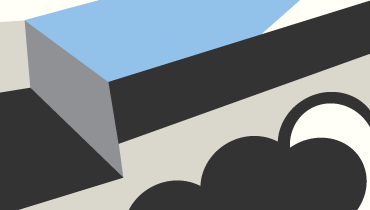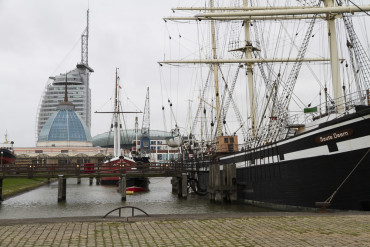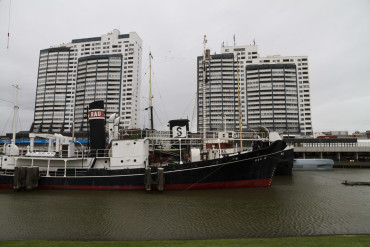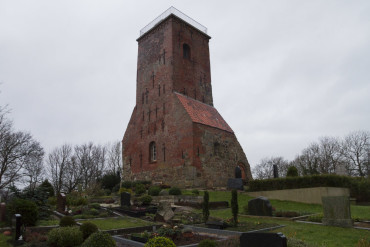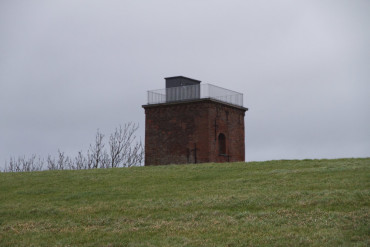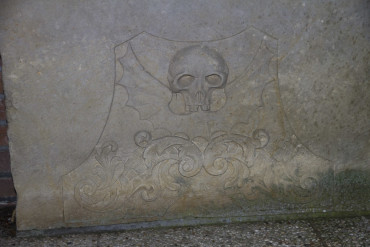When we came back to Bremen in November, we visited Bremerhaven as I wanted to see the harbour, which supposedly influenced Goethe’s use of land reclamation in Faust. We walked around the artificial basins, but the weather was relentlessly rainy, and so I didn’t bother taking pictures.
At the beginning of the new year, Alessandra and Katie were both in Germany, and we returned to Bremerhaven to spend a day together at the nearest place you could describe as a seaside town.
What I notice about Bremerhaven is how much it seems to be dedicated to somewhere else. The indoor shopping mall is designed to look like a Tuscan village, the 1890s front light is built in the style of a minaret and stands above the rocky artificial cliffs of the local zoo with its polar bears and chimpanzees. The city claims to be home to the only museum in Europe devoted to emigration.
We drove across the vast container port, the steely January skies getting yet darker as the afternoon progressed.
I wanted to visit the tower of the church in Imsum, just north of Bremerhaven. The church was built in the 13th century, its parish originally including the village of Lepstedt (or Lebstedt), which lay west of here but was washed away during a storm tide in the late middle ages. The church found itself by the sea and started to be used as a beacon for ships travelling in and out of the Weser. The nave and spire were removed in the 1890s, but the tower remains visible over the dyke and is known as the Ochsenturm. It is accessible as a viewing platform, although it was closed on our visit.
The drizzle was getting too much to bear, and so we drove back.
